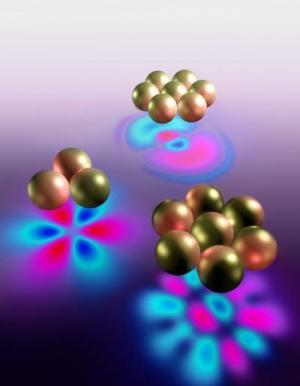Imagine innovative installations with amazing and surprising optical properties that do not exist in nature - prepared simply by evaporating particle droplets over a surface

The researchers found a way to use light-activated nanolayers as building blocks for two- and three-dimensional systems that could be used for the development of chemical sensors, nanolasers and innovative light-receiving materials. Similar to the way a child uses Lego blocks to build complex three-dimensional systems, scientists use this innovative chemical self-assembly method to make complex structures capable of capturing, storing and diffusing light. The research findings were published in the scientific journal Science.
"We used the method to prepare a structure consisting of seven nanolayers which yields a certain type of scattering pattern known as "Fano resonance," explains one of the authors of the paper, Peter Nordlander, professor of physics and astronomy at Rice University. "These resonances result from special interference effects of light waves, and they only occur in man-made materials. Since these materials organize independently, they are easy to prepare, so that they can lead to important commercial applications."
Due to the unique nature of Fano resonances, the new materials are able to capture light, store energy and scatter radiation in unusual ways that do not exist in natural materials. The researchers note that the new materials are ideally suited for the preparation of extremely sensitive chemical and biological sensors. Also, they may be useful in nanolasers and used as components in printed photonic circuits where light is transmitted instead of electricity.
Researcher Nordlander, the world's leading theorist of nanoparticle-based plasmonics, predicted back in 2008 that a seven-layer nanostructure would yield Fano resonances. It was the article that anticipated this finding that spurred one of the other research partners to try and prepare the structure, explains researcher Nordlander.
The innovative self-assembly method developed was also used to prepare magnetic nanostructures containing three layers. The optical properties of these materials are described in an article published in the journal Science, where it was also reported how the method could lead to the creation of much more complex three-dimensional structures.
Nanolayers, the building blocks used in the new research, are twenty times smaller than red blood cells. In their shape they are similar to chocolate balls, but they are coated with gold instead of chocolate and their core is a glass ball. By changing the size of the glass core and the thickness of the gold shell, the researchers created nanostructures that react with unique wavelengths of radiation.
"Nanolayers are already one of the most versatile types of plasmonic nanoparticles, and this innovative self-assembly method for preparing complex two- and three-dimensional structures simply adds to that," explains the researcher.
